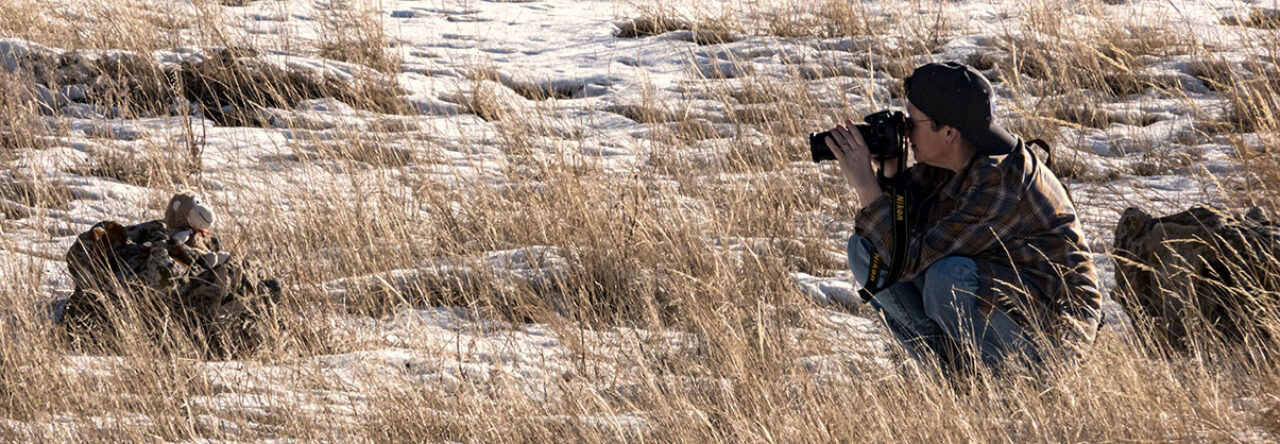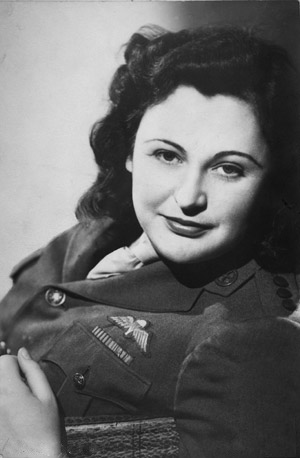The Gestapo called her “The White Mouse.” She could kill you with her bare hands. She was a decorated World War II heroine of the French Resistance.
Nancy Grace Augusta Wake was born on Aug. 30, 1912 in Wellington, New Zealand. She spent most of her childhood in Australia, but it would be while living in Europe as a freelance journalist where she made her mark on history.
Her early life was filled with constant arguments with her mother and siblings. She was the youngest of six children and eight years younger than her closest sibling. Her father left for the United States when she was four years old.
Nancy ran away at sixteen and worked as a nurse under an assumed name until she turned eighteen and could work independently without fear of family repercussions. After inheriting a sum of money from an aunt, Nancy traveled to the United States and England.
In 1932, she began studying journalism. Less than a year later, she was working as a journalist in Paris for the Hearst newspaper chain reporting on European events, including the violent rise of Nazism.
During a visit to Vienna on assignment in the mid-1930s, Nancy saw Nazi gangs beating Jewish men and women in the streets. She made herself a promise that if an opportunity ever arose, she would do whatever was necessary to stop the Nazis.
She married French businessman, Henri Fiocca in 1939 and a year later the couple joined the French Resistance. She acted as a courier, transporting everything from messages to food to radio parts into southern France. She also helped groups of people move from one safe house to another.
She became so good at this last task, she was promoted to getting Allied pilots and Jewish refugees out of France and into neutral Spain via the Pyrenees.
She bought an ambulance and used it to help refugees fleeing the German advance. Being the beautiful wife of a wealthy businessman, she had an ability to travel that few others could contemplate. She obtained false papers that allowed her to stay and work in the Vichy zone in occupied France, and became deeply involved in helping to spirit a thousand or more escaped prisoners of war and downed Allied fliers out of France through to Spain.
She also had multiple identities. Even though the Gestapo tapped her phone and opened her mail, they could never catch her. Through it all, she continued her work.
She enjoyed flirting and could easily spot a German soldier even in their “civvies.”
“I’d see a German officer on the train or somewhere, sometimes dressed in civvies, but you could pick ’em. So, instead of raising suspicions I’d flirt with them, ask for a light and say my lighter was out of fuel,” she recalled.
She told how she would get beautifully dressed and hang around making dates with Germans to get information.
“A little powder and a little drink on the way, and I’d pass their posts and wink and say, ‘Do you want to search me?’ God, what a flirtatious little bastard I was.”
Nancy eluded the Gestapo so often they placed her at the top of their wanted list with a five million-franc bounty.
So busy was she that the Gestapo came to call her ”the White Mouse”, in part, it seems, because whenever they felt they had this beautiful woman they had heard about cornered, she was able to disappear. Once, the Gestapo almost caught her – but she was able to escape while bullets whistled around her ears, before getting over the Pyrenees herself.
After fleeing France in 1943, she traveled to England, still looking to participate in the resistance.
In England, she convinced the British government to train her as a spy. She worked in the French Section of the Special Operations Executive under the code name “Hélène.” She was considered an expert in, “explosives, weaponry, hand-to-hand combat and how to prosper behind enemy lines.”
Although the Gestapo killed Henri two months after she fled, Nancy did not learn of his death until France was liberated from German occupation. He had been tortured and executed for refusing to give any information on Nancy.
“I always felt responsible for his death,” Wake said in 2002. “They tortured him. And his father said to him, ‘They’ll release you if you tell them where Nancy has gone.’ And he said, ‘Papa, laisse-moi tranquille’.”
Papa. Leave me alone.
Nancy and two other SOE members parachuted into France’s Auvergne region in April 1944. They were among 39 women and 430 men who parachuted in to help with D-Day preparations.
At age 31, she was tasked with collecting nighttime parachute drops of weapons and ammunition, and hiding them in storage caches for the allied armies. She also distributed weapons to 7,000 Maquis resistance fighters she later led who were hidden in the mountains. Nancy set up wireless communications with England and harassed the Germans.
Many times, members of the French resistance would not believe she had been sent to help them, so she devised a plan to gain their respect.
She went drinking. She was always the “last man standing.”
When D-Day arrived, Nancy helped organize the disparate bands of fighters to blow up bridges, ambush Germans, and fight any way she could to be victorious. She was never afraid to get her hands dirty. She was always up to the task of defeating Nazis.
On one raid, Wake killed an SS sentry with her bare hands to prevent him raising the alarm. She slit his throat.
In another confrontation, she lost her radio and codes, forcing her to ride a bicycle 500 kilometers (380 miles) round trip through multiple German checkpoints to replace her codes. The trip took seventy-two hours.
During a later attack on an arms factory, Wake killed a sentry with a karate chop to the neck.
“They’d taught this judo-chop stuff with the flat of the hand at SOE, and I practised away at it. But this was the only time I used it — whack — and it killed him all right. I was really surprised.”
Nancy continued working in the finer arts of sabotage, roadblocks and gunfights. Fellow Resistance officer Henri Tardivat said of her, “She is the most feminine woman I know, until the fighting starts. Then, she is like five men.”
In September, she left the resistance and traveled to SOE headquarters in Paris before returning to England.
During one dinner at the British Officers Club in Paris, she got into an argument with a waiter who thought he had won the verbal argument by saying he’d rather serve Germans than her and her noisy friends.
She reflected on this for perhaps half a second before leaping to her feet and knocking him senseless with a right hook. As she recounted, as soon as another alarmed waiter rushed to his fallen colleague with a glass of brandy, she grabbed it, drained it in two seconds, said ”Merci”, and walked on out the door. That was Nancy Wake.
The white mouse that roared was Australia’s most decorated woman. Nancy received several honors for bravery, including the Congressional Medal of Freedom by the United States, the George Medal from Britain and three top French honours: the Legion d’Honneur, the Croix de Guerre, and the Medaille de la Resistance.
She sold the medals to the Returned Services League for $156,000 AU ($90,304 US) in the early 1990s. They were donated to the Australian War Memorial where they can be seen today.
The Australian government held fast to the notion that because she had not fought for any Australian service, she was not entitled to a medal from them. Nancy was nonplussed when she was asked about it in April 2000.
”The last time there was a suggestion of giving me [an Australian medal], I told the government they could stick their medals where the monkey stuck his nuts. The thing is if they gave me a medal now, it wouldn’t be given with love so I don’t want anything from them. They can bugger off!”
She was eventually awarded the Companion of the Order of Australia (2004) and the RSA Badge in Gold (2006).
After the war, Nancy married RAF pilot John Forward. In 2001, four years after John died, she moved to London. She stayed at the £220-night ($256) Stafford Hotel in Piccadilly until her money ran out. The owner did not want to kick her out. He absorbed some of her costs along with anonymous donors, one of which was allegedly Prince Charles.
The hotel had been a British and American club during the war. Nancy held court in the hotel bar for any admirers willing to drop by and listen to her stories. After Peter FitzSimons published her biography, Nancy reportedly made another $200,000 AU ($115,792 US).
In writing her obituary, Peter FitzSimons, who also wrote, “Nancy Wake: A Biography of Our Greatest War Heroine,”said, “it was that the spirit of the woman who, in 1944, had raided the Gestapo headquarters at Montlucon and unleashed such carnage, was still entirely intact, even if it was now encased in rather fragile flesh.”
Nancy didn’t like killing. When it came to war, however, she once told an interviewer, “I don’t see why we women should just wave our men a proud goodbye and then knit them balaclavas.”
By her own account she once killed a German sentry with her bare hands, and ordered the execution of a woman she believed to be a German spy.
“I was not a very nice person,” Ms. Wake told an Australian newspaper in 2001. “And it didn’t put me off my breakfast.”
Several films and television shows have discussed her adventures. She was reportedly pleased with the results, except for one area.
She did not have affairs, she insisted in a 1987 Australian documentary.
“And in my old age, I regret it,” she said. “But you see, if I had accommodated one man, the word would have spread around, and I would have had to accommodate the whole damn lot!”
She told Peter when she died she knew what she wanted to happen.
“I want to be cremated,” she said, with barely controlled emotion. “And I want my ashes to be scattered over the mountains where I fought with the Resistance. That will be good enough for me.”


Jimmie Guymon
Did Nancy Wake ever receive a battlefield or military commendation or were they all civilian medals?